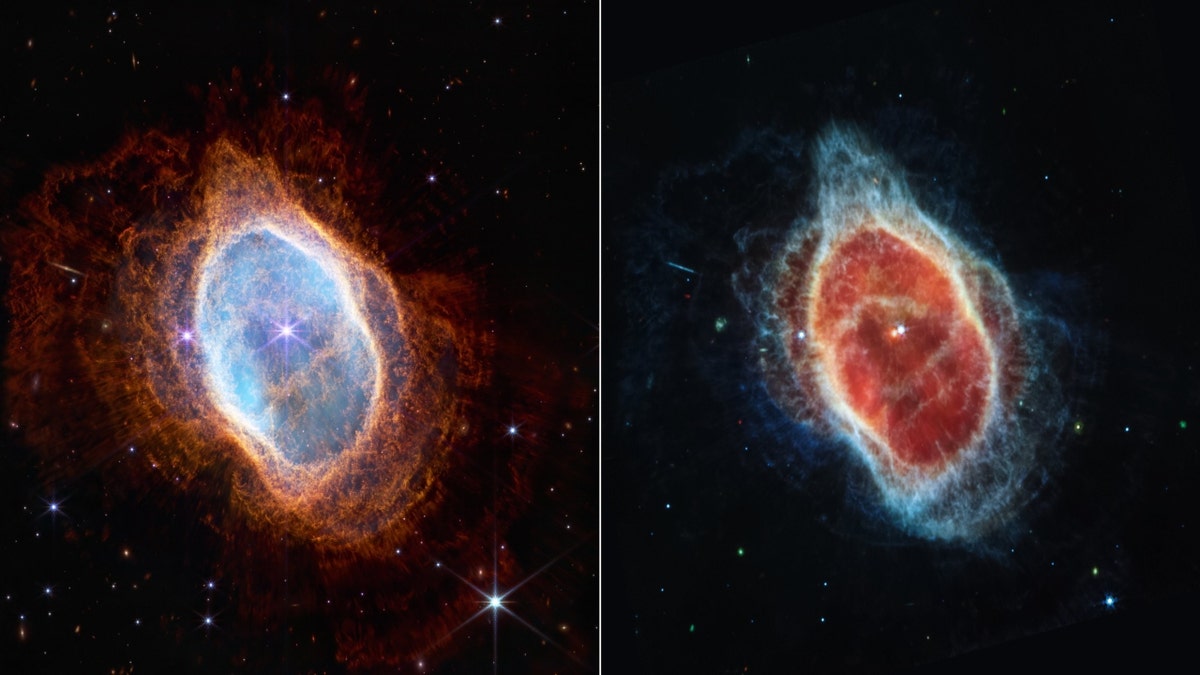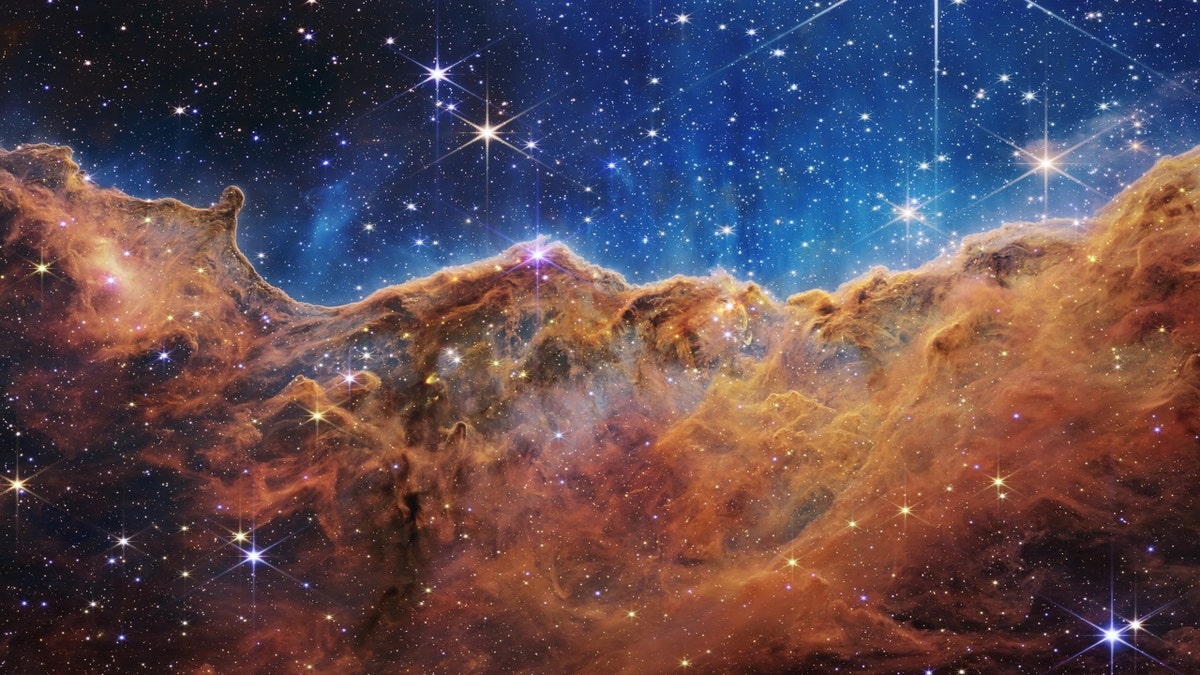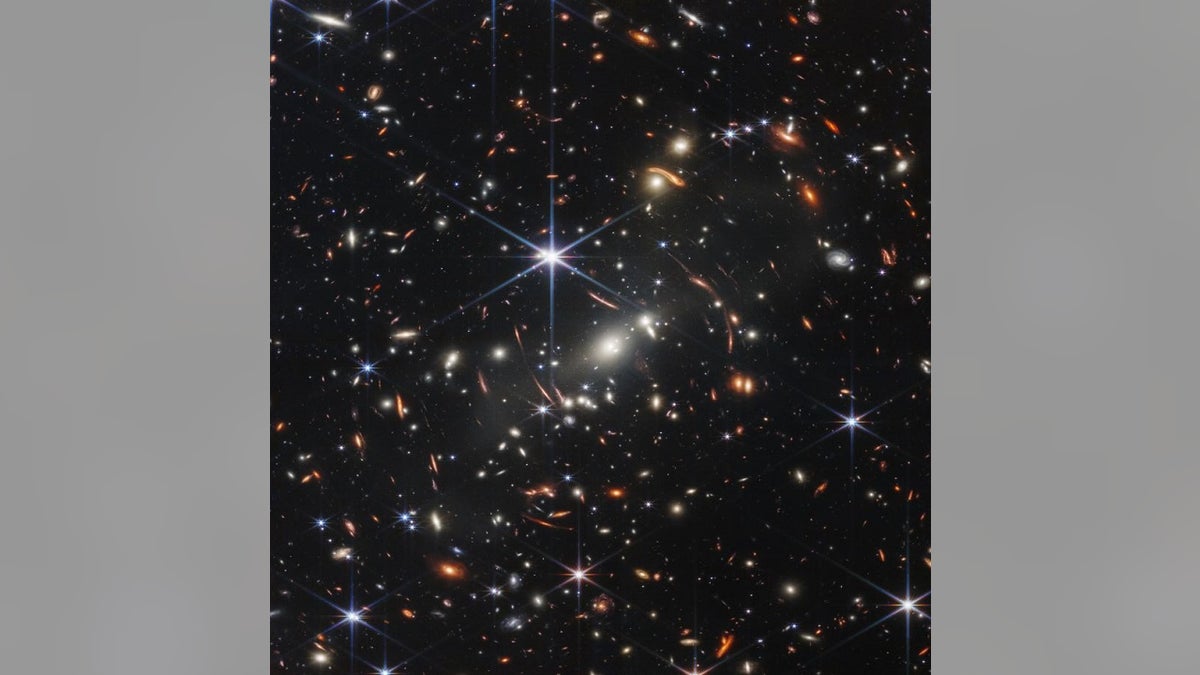James Webb Space Telescope: NASA's new eye on the universe
Power Player of the Week: John Durning, deputy project manager for the James Webb Space Telescope Project
NASA and its international partners released the full series of James Webb Space Telescope's first full-color images and data on Tuesday.
The pictures include the WASP-96 b exoplanet, which is a hot, gaseous giant located nearly 1,150 light-years from Earth.
WASP-96 b is one of more than 5,000 confirmed exoplanets in the Milky Way galaxy, and it is much puffier and significantly hotter than any planet orbiting the Earth's sun.
The indirect image has captured the distinct signature of water, along with evidence for clouds and haze in the surrounding atmosphere.
"The observation, which reveals the presence of specific gas molecules based on tiny decreases in the brightness of precise colors of light, is the most detailed of its kind to date, demonstrating Webb’s unprecedented ability to analyze atmospheres hundreds of light-years away," NASA wrote in a caption alongside the image.

A transmission spectrum made from a single observation using Webb’s Near-Infrared Imager and Slitless Spectrograph (NIRISS) reveals atmospheric characteristics of the hot gas giant exoplanet WASP-96 b. (IMAGE: NASA, ESA, CSA, STScI)
NASA UNVEILS FIRST IMAGE FROM JAMES WEBB SPACE TELESCOPE, REVEALING THOUSANDS OF GALAXIES
In another shot shared via an international broadcast, the Southern Ring, or "Eight-Burst," planetary nebula is shown in greater detail, which was previously hidden from astronomers.
The expanding cloud of gas surrounding a dying star is located approximately 2,000 light-years away from Earth.
The star at the center has been sending out rings of gas and dust for thousands of years in all directions and appears cloaked in dust for the first time.

This side-by-side comparison shows observations of the Southern Ring Nebula in near-infrared light, at left, and mid-infrared light, at right, from NASA’s Webb Telescope. (NASA, ESA, CSA, STScI)
Observations with the Near Infrared Camera (NIRCam), which is Webb's primary imager, also revealed extremely fine rays of light around the planetary nebula.
Next, in an image presented by European Space Agency (ESA) partners, Stephan's Quintet – a visual grouping of five galaxies – is seen in a new light, about 290 million light-years away.
The information from Webb – with its powerful, infrared vision and extremely high spatial resolution – reveals "never-before-seen" details in the galaxy group and galactic interactions.
"Sweeping tails of gas, dust and stars are being pulled from several of the galaxies due to gravitational interactions. Most dramatically, Webb captures huge shock waves as one of the galaxies, NGC 7318B, smashes through the cluster," NASA wrote.

An enormous mosaic of Stephan’s Quintet is the largest image to date from NASA’s James Webb Space Telescope, covering about one-fifth of the Moon’s diameter. (NASA, ESA, CSA, STScI)
CANOO TESTING NEW NASA CREW TRANSPORT VEHICLES
The final image showed the glittering vista of the Carina Nebula – a stellar nursery – with brand-new stars that were previously completely hidden.
The "Cosmic Cliffs" captured by Webb are the edge of the giant, gaseous cavity within the Carina Nebula's star-forming region called NGC 3324.

What looks much like craggy mountains on a moonlit evening is actually the edge of a nearby, young, star-forming region NGC 3324 in the Carina Nebula. (NASA, ESA, CSA, STScI)
The Carina Nebula, found within the Milky Way, is approximately 7,600 light-years away. It is home to many massive stars that are several times larger than the sun.
On Monday, President Joe Biden unveiled the first "deep field" image offering the deepest and sharpest infrared image of the distant universe to date.
The image showed galaxy cluster SMACS 0723 in stunning detail as it appeared billions of years ago, including thousands of galaxies, although only covering a patch of sky approximately the size of a grain of sand held at arm's length by someone on the ground.
According to NASA, the combined mass of the galaxy cluster acted as a gravitational lens, magnifying more distant galaxies behind it.

The first released Monday from the James Webb Space Telescope shows galaxies around each other whose light has been bent, NASA officials said. (NASA)
The picture was taken by NIRCam and was made from images at different wavelengths, totaling more than 12 hours.
Comparatively, the Hubble Space Telescope, Webb's predecessor, took weeks.
According to the Webb team, the $10 billion-dollar observatory is now ready to begin full scientific operations, following a check of scientific instruments.
CLICK HERE TO GET THE FOX NEWS APP
Thousands of people worked on the NASA-led project – including at the Canadian Space Agency (CSA) – for nearly two decades. The agency said that teams have already applied for time to use the telescope.
At the end of Tuesday's broadcast, NASA Administrator Bill Nelson quoted famous American astronomer Dr. Carl Sagan.
"In the words of the famous Carl Sagan: ‘Somewhere, something incredible is waiting to be known,’" he said. "I think those words are becoming reality."
The Associated Press contributed to this report.










































